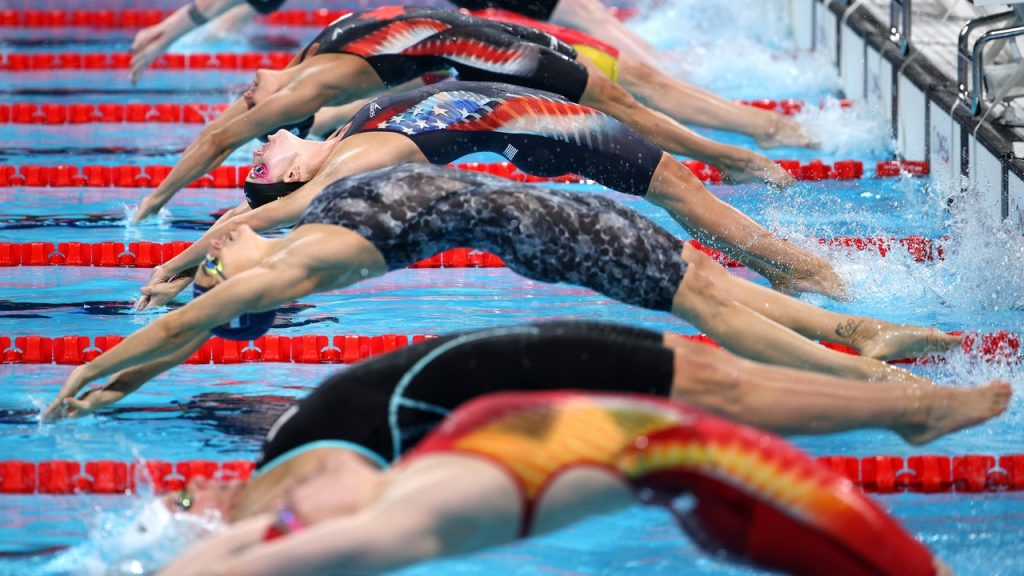Swimmer’s hair is a common problem faced by swimmers, both professional and novice, due to repeated exposure to chlorine and other chemicals found in swimming pools. This damage can manifest as dry, brittle hair that is more prone to breakage, split ends, and discoloration. Those with chemically treated, colored, or naturally curly hair are particularly vulnerable to swimmer’s hair, as chlorine can easily penetrate the hair shaft and cause dryness, brittleness, and increased porosity. Curly hair, in particular, is more susceptible due to its natural shape making it more porous, leading to increased dryness and damage.
The effects of swimmer’s hair can be seen in signs such as dryness, brittleness, split ends, tangling, and discoloration, often appearing as a green tint on blonde hair. It is important to treat and prevent swimmer’s hair to avoid more serious problems later on. Olympic swimmer Claire Weinstein shared her experience of unintentional blonde highlights and change in hair color due to chlorine and sun damage from spending long hours in the pool. This damage may not seem like a big issue at first, but it can lead to hair that is dry, straw-like, and prone to breakage if left untreated.
There are easy ways to treat and prevent chlorine damage from affecting your hair. Dr. Marisa Garshick, a board-certified dermatologist, recommends using products specifically designed to remove chlorine and other chemicals from the hair. This can help restore moisture, reduce brittleness, and prevent further damage. Additionally, using a leave-in conditioner, deep conditioning treatments, and protective styles can help protect hair from chlorine exposure and maintain its health and hydration.
Swimmer’s hair can be a problem for swimmers of all levels, from Olympians like Claire Weinstein to recreational swimmers. It is essential to take care of your hair before and after swimming to prevent chlorine damage. This includes thoroughly wetting your hair with clean water before entering the pool, applying a protective oil or conditioner, and rinsing your hair immediately after swimming. By following these simple steps and using the right products, you can keep your hair looking and feeling healthy despite frequent exposure to pool water.
In addition to treating swimmer’s hair, it is important to take preventive measures to minimize damage. Wearing a swim cap can help protect your hair from direct contact with chlorine and other chemicals in the pool water. Limiting the amount of time spent in chlorinated water, washing your hair with a clarifying shampoo after swimming, and avoiding excessive heat styling can also help maintain hair health and prevent swimmer’s hair. By incorporating these habits into your routine, you can enjoy swimming without worrying about the damaging effects on your hair.
Overall, swimmer’s hair is a common issue that many swimmers face, but it can be managed with proper care and preventive measures. By understanding the causes of swimmer’s hair, recognizing the signs of damage, and following a hair care routine tailored to protect against chlorine exposure, swimmers can maintain healthy, hydrated hair. Whether you’re an Olympic athlete or a recreational swimmer, taking care of your hair is essential to prevent swimmer’s hair and keep your hair looking its best.


